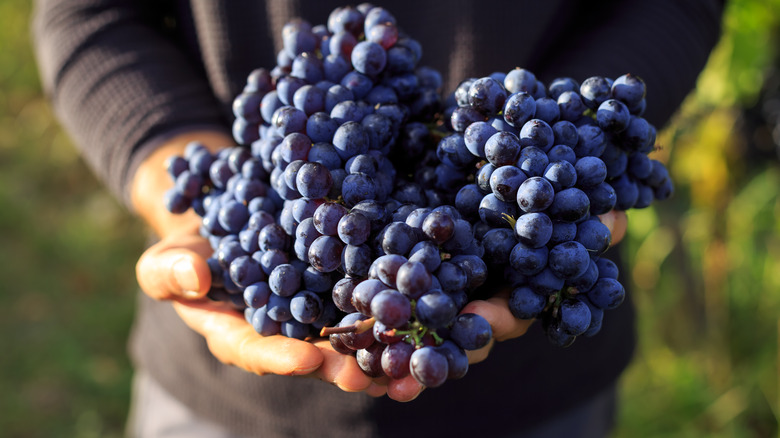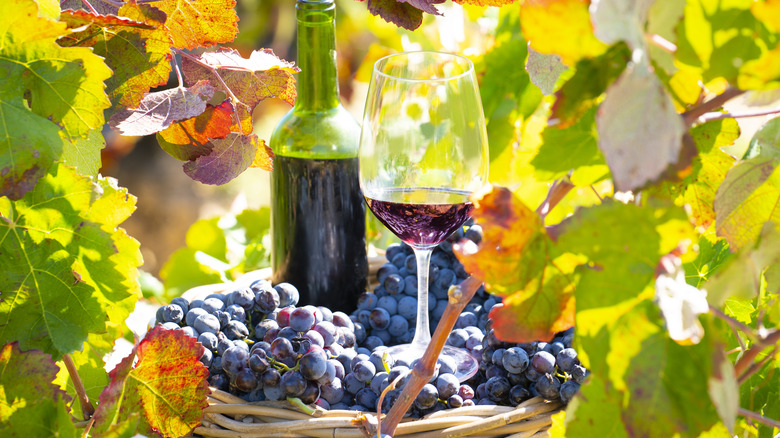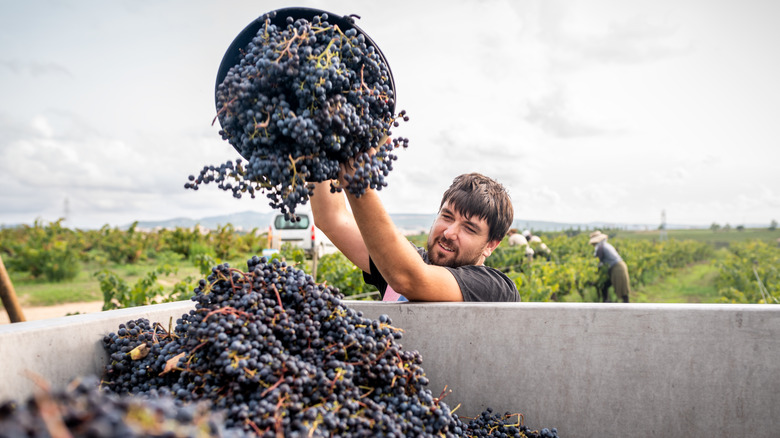It Takes A Lot Of Grapes Just To Make One Bottle Of Wine
Those who enjoy drinking wine are undoubtedly aware that the average bottle holds about five glasses worth, assuming each pour is precisely five ounces. It stands to reason, then, that if you divide the price of the bottle by five, that will tell you how much you paid for each glass. You can determine for yourself as a consumer whether it was a good value.
For wine producers, however, the most important measurement isn't how many glasses a bottle can serve, but rather how many grapes it takes to produce the wine in that bottle. This number is likely higher than you might think, typically ranging from about 600 to 800 grapes. Being more precise is difficult, due to the variance in size of wine grapes and the number of grapes required for different styles of wine. Sweet dessert wines, for instance, generally need a far greater number of grapes per bottle compared to dry wines.
The cost of a single bottle of wine
It's not just the 600 to 800 wine grapes (weighing about three pounds) on average that a winemaker must account for when figuring out how to price bottles to ensure a profit. The bottles themselves, the corks or screw-on caps, and the product labels all come with their own costs.
But the wine grapes are perhaps the most significant factor, considering the land on which they're grown must first be purchased. For instance, an acre of prime wine-growing land in Napa Valley can cost half a million dollars. Then there are the planting costs for items like seeds and fertilizers, and, if you're not growing biodynamically, pesticides as well. The first crop probably won't be ready for three or four years, but when it is, you'll need to pay people to harvest the grapes and produce the wine.
Yes, there's more. Fermentation tanks and barrels for aging cost money, and you'll probably want buildings to house them. The good news, though, is that if you produce only a single bottle of wine, you can charge a lot of money for it, as scarcity is often an important factor in determining price. One rare Estate wine, for example, sold for over $500,000 at auction.
What else goes into a bottle of wine?
Grapes are, of course, the main ingredient in wine, but they are not the only one that goes into making a bottle of wine. Yeast is the ingredient that initiates fermentation, transforming the sugar in grapes into alcohol. A secondary fermentation, called malolactic fermentation, also occurs in most red wines (and some white wines, too). Just as yeast starts the primary fermentation, bacteria is used to initiate the secondary one. In both cases, specific cultures or strains are sometimes used to achieve desired flavor profiles.
Water and additional sugars can also be added, either to decrease or increase the alcohol content, respectively. Sulfur dioxide is commonly added as a preservative. If it's present beyond certain legally defined levels (10 parts per million), this fact — that the wine contains sulfites — must be disclosed on the bottle label. Potassium sorbate is another preservative often used in winemaking, and potassium metabisulfite, a sanitizing agent, helps to enable an efficient fermentation process. Other ingredients can be included, even if only briefly. Egg whites, for instance, can be used to clarify wine, but they're removed before bottling.
So yes, there's a lot more that goes into a single bottle of wine than you might have realized. But mainly, it's grapes — about three pounds of them.



